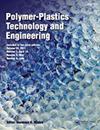Recent Developments on Epoxy-Based Thermally Conductive Adhesives (TCA): A Review
Q2 Materials Science
引用次数: 27
Abstract
ABSTRACT The development of new polymer-based conductive adhesives with specific performances and improved conductivity are increasingly critical for thermally interface material (TIM). Epoxy resins have been widely used as a common interface material for conductive adhesives due to its well-known ability to accept wide range of fillers possibly derived from carbon, metallic or ceramic sources. These conductive fillers with high inherent thermal conductivity, together with a possibility to characterize and manipulate the system, leads to the production of thermally conductive adhesives with higher knowledge content for a number of electronics applications. GRAPHICAL ABSTRACT环氧基导热胶粘剂(TCA)的研究进展
开发具有特定性能和提高导电性的新型聚合物基导电胶粘剂对热界面材料(TIM)越来越重要。环氧树脂被广泛用作导电胶粘剂的常用界面材料,因为它具有广泛的接受可能来自碳、金属或陶瓷来源的填料的能力。这些具有高固有导热性的导电填料,以及表征和操作系统的可能性,导致生产具有更高知识含量的导热粘合剂,用于许多电子应用。图形抽象
本文章由计算机程序翻译,如有差异,请以英文原文为准。
求助全文
约1分钟内获得全文
求助全文
来源期刊

Polymer-Plastics Technology and Engineering
工程技术-高分子科学
CiteScore
1.71
自引率
0.00%
发文量
0
审稿时长
4 months
 求助内容:
求助内容: 应助结果提醒方式:
应助结果提醒方式:


